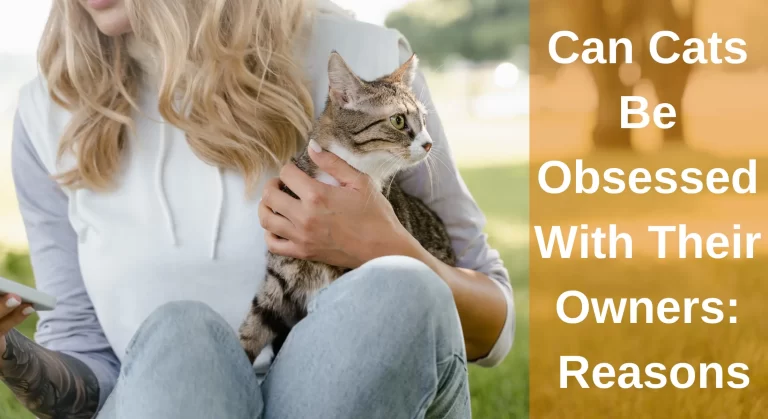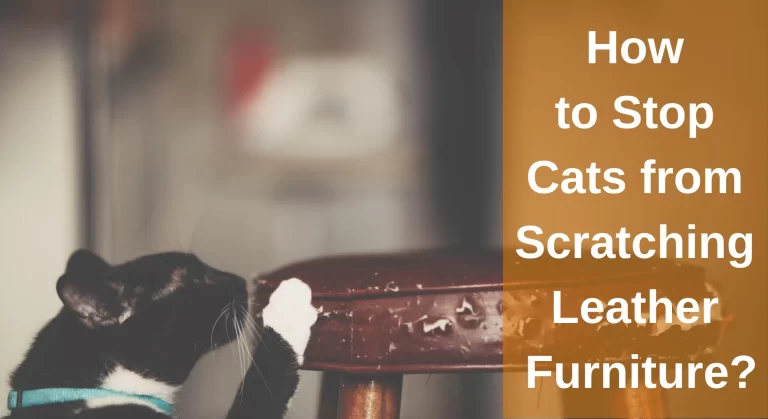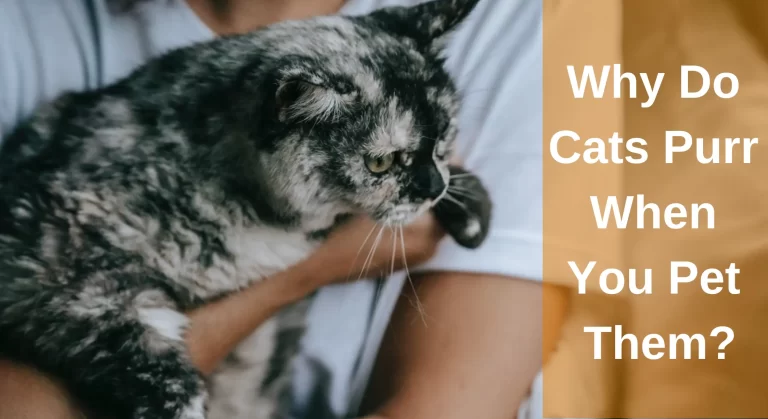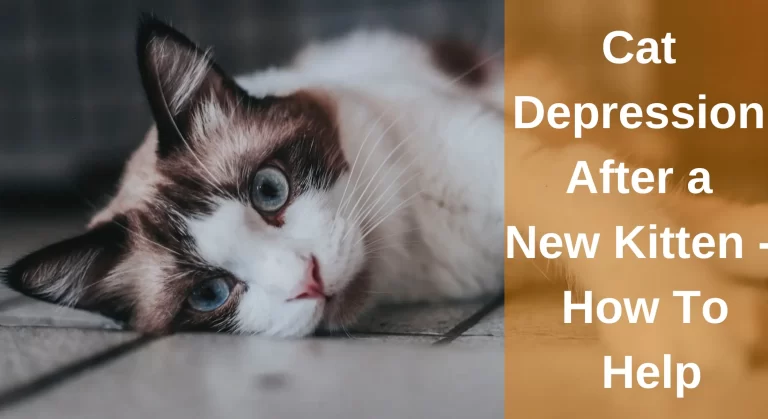How to Stop My Cat From Bullying My other Cat? [Causes And Solutions]
Cats aren’t usually friendly. A psychological clash between two felines can occur with time, resulting in growling, fur spraying, and slapping paws. Do you ever sit anxiously watching your feline and think, “How to stop my cat from bullying my other cat?”
The following are some frequent indications of cat bullying:
- Aggressive body posture, arched back, puffed-out tail, slanted or flattened ears, and dilated pupils
- Staring
- Biting, stalking and clawing
- Hissing
Here’s a quick solution, if your one cat continues to bully the other, then you must take serious action. Provide them with personal boundaries, make them feel secure, or “re-introduce” each other. You have to try several of these methods until you discover one suitable for you.
You’re likely seeking quick and easy answers to stopping your cat from bullying each other. So, in this article, I will explain various reasons for your felines displaying this behaviour. In this post, we’ll look at frequent clues that show your feline is bullying and some advice to prevent cat bullying in the upcoming years. Continue reading to learn some tips to live in harmony with your felines.
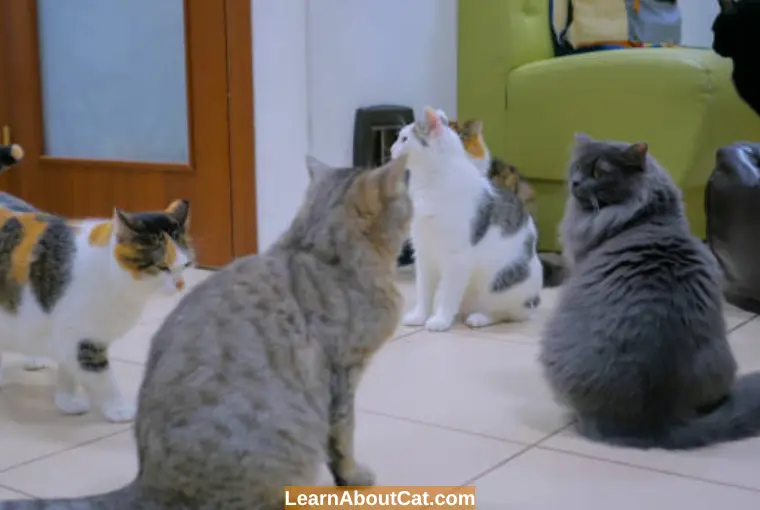
Are My Cats Playing or Fighting? How Do You Tell if Cats are Playing or Fighting?
Every cat owner frequently raises this issue. Although mock-fighting is natural and integral to every cat’s growth (such as spying, hunting, and jumping), it can be challenging to recognize if felines are playing or competing. Let’s examine several key indicators to help us reach that conclusion.
1. Body Posture
Notice the cats’ stance. Erect, forward-directed ears or gently inclined backward ears show friendliness or amusement, but flat, tilted-back ears show anger, annoyance, or violence. Moreover, pawing is quite acceptable as soon as the nails aren’t out, but keep an eye out for unarmored paws along with a cat resting.
Keep an eye out for fur erection abruptly (piloerection) and a curly tail, both of which signal a negative atmosphere.
2. Fair Play Principles
Do your felines start to play a game? Beginning and ending play is common, while genuine antagonism peaks quickly and lasts. Do your felines take turns ruling each other? Tickling or nibbling is acceptable as long as it’s not harmful; however, biting in prone regions is not.
3. Vocalizations
Hissing and screaming are strong indicators that everything isn’t going well. Howls could potentially reveal which cat is harassed. Quietness usually indicates that fair game has begun.
4. The Aftereffects
Do your felines ignore one another after a fight, or do they immediately begin petting, kneading, and using each other’s food bowls? Hostility will frequently persist. When playmates become fatigued, they usually come back to their customary occupations.
Signs of Cat Bullying
The nature of cat behaviour is territorial, regardless of whether they have lived with other pets all of their lives. Cats sometimes play rough, but it’s more than just a game when they do. The following are some typical indications of cat bullying:

1. Your Cat May Prevent Your Other Cat From Using The Litter Box or Eating
They may even try to prevent your other cat from spending time with you. If you find your cat doing this, it is likely an attempt to frighten and bully your other cat. Pay attention if your cat routinely sits directly in front of your other cat’s food bowl or litter box.
2. Cat May Hiss, Stare, Snarl, or Display its Teeth
When the bully cat sees or comes into touch with your other cat, it may hunch low to the ground or flatten its ears. All of these actions indicate that your cat is acting aggressively rather than simply playing. For example, when the other cat enters the room, your cat may hiss or show its teeth at them.
3. Out of Fear, The Harassed Cat May hide, Urinate, or Defecate
Take note if one of your cats is constantly hiding from the other cat or urinating or pooping outside their litter box. These are all indications that your cat is afraid. Bullied cats may sometimes stop eating or consume very little.
4. Your Cat May Scratch or Bite the other Cat, Causing Harm
Cats may slap, scratch, or bite each other during playfulness, but they seldom damage each other. If your cat is constantly assaulting or harming the other cat without provocation, it indicates that they are bullying rather than playing.
5. Your Cat May Groom Your other Cat Aggressively
If you find your cat licking your other cat vigorously, it indicates that they are attempting to establish dominance over them.
Why Do Cats Bully other cats?
Cats never quarrel with one another without any reason. When they quarrel, they will begin to ignore one other’s company and start to endure it. But on the other hand, this situation may worsen with time and result in a few catfights or bullying behaviours. Below are a few causes why cats of cats bullying each other.
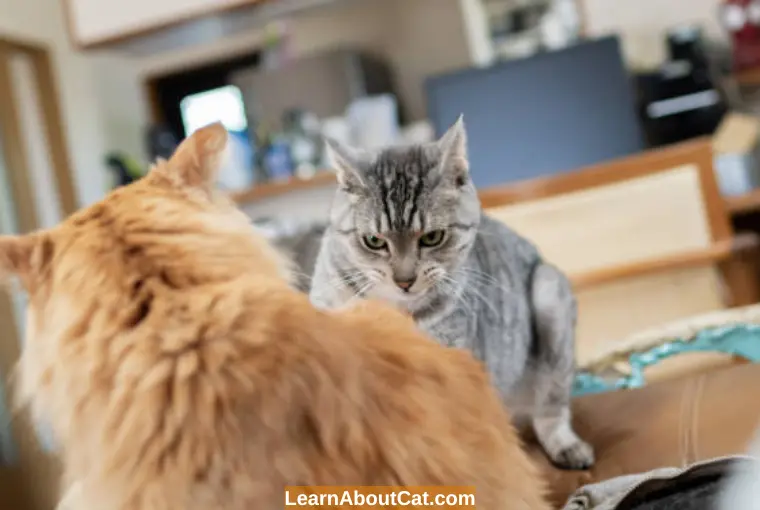
1. Alteration in Hormones
When breeding season arrives, there’s a good chance your 2 female felines will begin to fight. The bulk of these concerns can be easily resolved by neutering them before she arrives at the age of 1.
2. Stress
Any alterations in residence or surroundings make your cats anxious, resulting in bullying or attacking each other. They are more prone to feel upset and mistreat each other if their couch, food box, or waste box is moved or adjusted.
Stress can also occur if you adopt a new feline or if any of your felines runs away or dies. Moreover, the larger cat saw the kitten as a danger and started to harass him. Also, if your new feline is violent, your previous one will undoubtedly bully the elder cat in your house.
3. Territory Concerns
Cats compete over territory because there isn’t enough area. Cats put their impression on their region through scratches, patrolling, and pee stains. Visiting cats may be drawn into their territory and attacked as trespassers. Feral cats are more violent in their own domain, and the feline nearest to the home usually wins.
4. Violence that has been Redirected
Your cat may be bullying your second cat because of redirected anger. In this situation, your bullying cat becomes irritated and furious over anything totally irrelevant. Instead of venting his rage on the victim, your cat vents it on another cat.
Check Out: When Will My Cat Stop Hissing at New Kittens or Cats?
5. Medical Problems
Your cat may be bullying other cats because of disease. You’ll most likely detect clinical indicators if your cat has a medical illness. In addition, basic medical issues promote aggressiveness.
The primary reason for aggressive behaviour is pain-causing disorders such as rheumatoid, which make your cat more aggressive due to his frustration and anger at constantly uneasy.
Disorders that induce hormonal issues and brain problems might alter how well the brain responds to various scenarios. Another potential is loss of vision or hearing.
If your cat has osteoarthritis, hyperthyroidism, central nervous system disorders, or dental disease, it may display aggressive behaviour. Make an appointment with your veterinarian to determine whether your cat has a medical issue.
6. Attention
Because of a lack of focus, cats may mistreat another feline. Cats, like toddlers, may behave out if they won’t get sufficient care. If one cat believes another feline is receiving more care than he does, he will bully that feline.
Another possibility is a lack of entertainment or social contact to please your cat. Because your feline is frustrated, he may bully other felines into making himself cognitively active or amused.
7. Gender
Bullying may occur if you have cats of the same gender, whether 2 males/females. For example, two male cats may fight over one female cat. In this case, the larger male cat will bully the smaller ones so that he may get back off.
8. Sexually Dissatisfied
If your cat is not spayed or neutered, he or she may become more territorial (especially male cats). This technique can assist in reducing your cat’s territorial inclinations and help them relax.
How to Stop My Cats From Bullying Each Other?
Cats frequently exhibit aggression or territorial behaviour. Most cats who pick on other cats (or dogs) are considered aggressive; however, bullying can be violent or passive (done slyly). If bullying is occurring, you should take action to put an end to it.
It is important to Identifying the cause of aggression and addressing it at its source is the best way to stop bullying. If you stop the bullying at its source, the bullying should stop.

1. Slowly Reintroduce Your Kitties After a Few days to a Few Weeks
First, gently open the door to see how your cats interact with one another. If they don’t exhibit hostile behaviour, leave the door open further. Allow the cats to spend time together in the same room as long as they stay calm. If your cat begins to bully you again, separate them and give them a few more days of alone time. If your cats react well to reintroduction, give them delectable goodies to reinforce good behaviour.
- Set Up Control Arrangements: These can include a leash, a carrier box, a wireless fence collar, and non-lethal deterrent stimuli like sprays or sounds.
- Encourage Play: Keep toys around and attempt to persuade the cats to play with you.
- Keep treats on Hand: When it comes to educating your cat in and out of specific behaviours, treats are your best friend.
Also Read: How To Introduce A Kitten To An Older Cat?
2. Keep Your Kitties Apart
If your cat is only acting aggressively toward your other cat, keep them apart for 3-5 days. If your cat has damaged your other cat or displayed excessive aggressiveness, you should keep them apart for 1-2 weeks.
Keep your cats’ feeding dishes on opposite sides of a door to gradually introduce them to each other. They may link each other with a favourable experience if they can smell and hear each other while eating.
3. Provide Your Kitties With Easy Access to the Materials They Require
Give each cat its own food and drink station, as well as its own litter box, to keep them from becoming territorial. Make sure there’s enough distance between each cat’s station, so they don’t compete for resources.
4. Give Them Their Own Space
Cats may fight or regard the other cat as prey if they are afraid. Install several cat trees, condos, and window perches throughout the house. Retreat your cats to higher ground, so they don’t run into each other.
5. Give Your Cats Equal Attention and Play with them Daily
Cats require 1-2 hours of playing every day to release their energy healthily. Giving your cats continuous playtime reduces the likelihood of your cat becoming hostile or bullying your other cat. Make sure each of your cats gets attention during playing to keep jealousy at bay. Give each cat its own playtime if they don’t get along well enough to play together.
6. Make Your House More Serene and Tranquil
Cats with a lot of bottled-up energy, particularly indoor cats, are more inclined to fight. Playing with your cats frequently might help to build a more calm family. Grab a treat and have your cats pursue you down the corridor. Set up interactive toys or play with a feather wand.
Each area should have a soothing diffuser to help create a calmer atmosphere. This drug-free treatment replicates a cat’s pheromones, emitting natural signals that inform him that your house is secure.
7. To Soothe Your Cats, Use a Pheromone Diffuser
These items release fragrances that are similar to cat pheromones, which can help your cat relax. A pheromone diffuser may be purchased online or at your local pet store.
Because humans cannot detect these odours, you are in luck if you are concerned about how the fragrance may affect your house.
8. Your Cats should Be Spayed Or Neutered
This surgery can help lower your cat’s aggressiveness while providing various additional health advantages. If one of your cats isn’t spayed or neutered, contact your veterinarian to arrange for the operation.
9. If The situation Does Not Improve, See a Cat Behaviourist
An animal behaviourist may work with your cats to find solutions that work for them.
What Can I Do to Heal an Aggressive Cat?
A cat’s personality develops within the first few weeks of life. This implies that we, as cat parents, frequently have little control over what our cats learn at that period.
Aggression can sometimes be used as a defensive strategy against pain or disease. When a cat first exhibits hostility, the first step is to take him to the doctor for a brief inspection. Getting your cat fixed as soon as possible is critical for regulating his hormones and undesirable behaviour.

First impressions are crucial. Use the two-room strategy to gradually expose your cats to one another when you wish to increase your feline family.
Never react to your cat’s dominant behaviour. Ignore your cat if it is demanding, attention-seeking, or hostile in any manner. Pretend you don’t see him, move away, or put your cat in another room for a time-out. Do not encourage or engage in aggressive conduct.
Frequently Asked Questions
How do you stop alpha cat behaviour?
To stop your cat from being alpha, avoid reacting to his dominant behaviour. Neglect your cat when it wants your attention after behaving aggressively with other cats. Pretend you can’t see them, move away, or put your cat in other places for a period.
Don’t encourage or indulge in aggressive conduct. To avoid his alpha behaviour, you can also give him stroking sessions but never pet them aggressively.
Why Is My Cat Being Bullied by My Neighbor’s Cat?
Bullying is a terrible feature of the cat world. It is likewise based on surviving. The risks are even higher in the actual world. Territory, nutrition, attention, and leadership are the factors that may trigger your neighbour’s cat to bully yours.
Do cats get jealous?
Yes, just like humans, cats also get jealous of each other. This mostly happens when you ignore your one cat and give attention to another.
Moreover, it also happens if you bring a new kitten to your home.
In this scenario, cats may show destructive behaviours such as scratching on couches, furnishing or peeing on the floor or walls.
How long does it take for 2 cats to get along?
Most felines require between eight and twelve months to form a connection with a new feline. Even though a few cats will become great companions, some do not.
Many felines who never make friends begin to avoid one another; however, some felines quarrel when they’re met the first time and keep fighting till one of them goes out of the house or finds a new home.
Is my cat trying to dominate my other cat?
Dominant felines may growl, claw, and scream to show their authority in multiple feline households. They also pee out of their litter box in places visited by other felines.
They can eat other cats’ food bowls and threaten them to stay away until they’ve finished eating.
How can you stop a domineering cat’s behaviour?
It’s not easy to live with an angry cat. Be patient and forgiving as you attempt to turn that demanding cat into a tolerant and kind kitten. It takes time, but with patience, your cat will become a better feline buddy and more mannered.
How do I get my cat to stop attacking my other cat?
It’s never a good idea to let your cats “fight it out.” Cats don’t solve issues through fighting, which usually worsens matters. You can interrupt aggressive behaviour with a loud handclap or water gun spray. You should neuter your cats. It is particularly common for intact males to act aggressively.
Wrap UP!
There are several causes for and approaches to dealing with cat violence. In most circumstances, you can strive toward an armistice. Don’t expect your cats to fall in love or become best buddies who cuddle together overnight. Maintain minimal initial expectations and aim for fundamental toleration and avoidance on their behalf. Just keep in mind that this is a time-consuming and patient process.
Remember that if the situation between your cats does not improve and constitutes a continuing threat to their safety, you may always consider resituating one of them.
Related Posts:
Who is Isabella?
My name is Isabella, and I am a dedicated and knowledgeable cat enthusiast. With years of experience caring for cats and a deep love for felines, I made a mission to help other cat lovers navigate the challenges of cat ownership.

